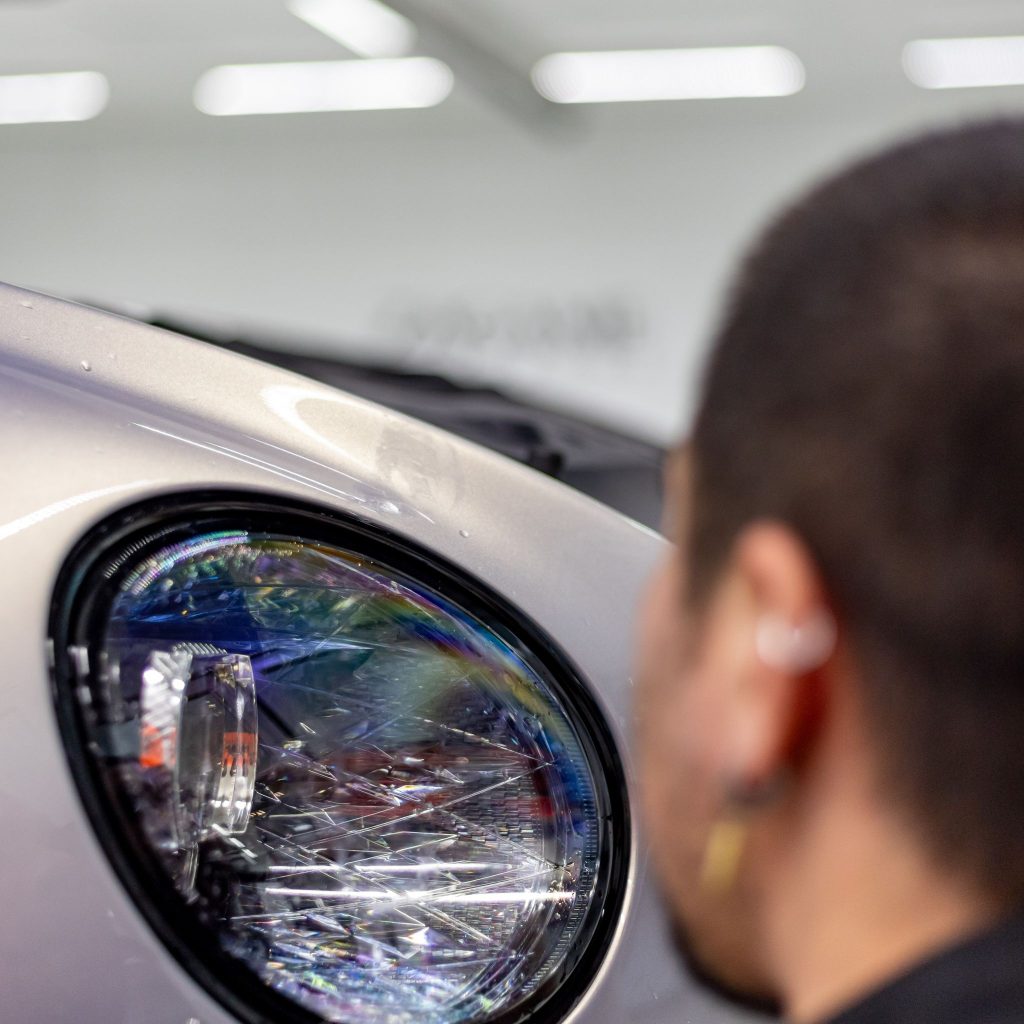
January 31, 2025
How to check if a car has been in an accident
Are you buying a used car? The last thing you want is to unknowingly drive off in a vehicle with hidden accident damage. While some repairs are done professionally, others can be rushed or poorly concealed, affecting the car’s safety, value, and performance. The good news? There are telltale signs that can help you spot past damage – if you know what to look for.
And if you do find signs of previous repairs, Zagame Autobody is here to help with expert restoration services to get your car back to its best.
Review the Vehicle History
First, start by checking the car’s logbooks, as they serve as the central record for a car’s servicing and repairs. A well-maintained logbook should show consistent servicing, major repairs, and any part replacements. Gaps in history, repeated fixes on key components like the suspension or bodywork, or repairs done by unknown mechanics could be signs of past accident damage.
However, not all repairs are officially recorded or legitimately handled. That’s why it’s just as important to inspect the car itself for signs of previous damage to make sure you’re not overlooking hidden issues.
It’s also worth checking the PPSR (Personal Property Securities Register) report, which can reveal if the car has been written off, stolen, or still has money owing on it, helping you make a more informed decision.
Inspect the Paintwork and Panels for Inconsistencies
Check the car’s paint carefully, looking for any slight differences in colour between panels – these can be a sign of previous repairs. Variations in shine or texture, especially under different lighting angles, might also indicate repainting or touch-ups. The best way to spot inconsistencies is by inspecting the car in natural sunlight, where mismatched colours or uneven finishes are more noticeable. If anything looks off, ask the seller about the car’s history and whether any paintwork has been redone due to damage or repairs.
Next, check the panel gaps and alignment. Gaps between doors, fenders, and the trunk should be even and consistent. If they appear wider or uneven, it could suggest past structural damage or poor repair work. Also, open and close the doors, hood, and trunk – if they don’t shut smoothly or sit off-centre, it’s a sign of structural issues that weren’t properly fixed.
Check for Replaced or Mismatched Parts
Keep an eye out for parts that look newer than the rest of the car, like headlights, taillights, or airbag covers – these could indicate past repairs after an accident. Some replacements may also involve third-party or aftermarket parts, which might not match the original components in quality, look or fit.
If something seems off, ask the seller about any replacements, why they were needed, where the work was done, and whether genuine manufacturer parts were used. This can help you understand the car’s history and whether the repairs were done properly.
Look for Signs of Structural Repairs
Checking for structural damage is crucial, as poor repairs can compromise the car’s safety. Inspect areas like the engine bay, boot floor, and undercarriage for signs of welding marks, cut sections, or uneven seams. Factory welds are usually smooth and uniform, while repair welds can look rough or inconsistent.
Also, check for subtle creases in areas like the boot floor or engine bay – these can be signs of past collisions. While quality repairs should smooth out the damage, poorly done fixes may leave behind bent or uneven panels, especially in less visible spots. Creased metal can indicate rushed or incomplete repairs, which may impact the car’s structural integrity.
Check the Undercarriage for Fresh Undercoat or Rust
A shiny, fresh undercoat on an older car can be suspicious. While undercoating is sometimes applied for maintenance, it can also be used to conceal rust, welding, or past repairs. If the coating looks too new compared to the rest of the vehicle, ask the seller about it.
Additionally, check hidden areas like the undercarriage, wheel wells, and engine bay for rust or unpainted surfaces. If paint was stripped for welding without properly sealing the metal, rust can develop over time, which may weaken the car’s structure.
Assess the Tyres and Suspension for Alignment Issues
Uneven tyre wear – especially on one side – can indicate suspension misalignment or hidden chassis damage from a past accident. On a test drive, pay attention to how the car handles.
If it pulls to one side, feels unstable over bumps, or has unusual vibrations, it could mean there are underlying structural or alignment issues that need attention.
Inspect Screws, Fasteners, and Small Details
Factory-installed screws and fasteners on fenders, bonnet hinges, and splash guards should be uniform in type and wear. If you notice mismatched, rusted, or missing screws, it could be a sign that parts were removed for past repairs.
Small details like this can often reveal hidden repair work, so it’s worth checking closely.
Get a Professional Inspection
Even if a car looks fine on the surface, some signs of past accidents can be hard to spot without the right expertise. A pre-purchase inspection from a trusted mechanic or autobody specialist can help uncover hidden issues and give you peace of mind before making a decision.
Precision Matters. Trust Zagame Autobody.
When it comes to your vehicle, only expert care will do.
At Zagame Autobody is here to help with expert repairs, we deliver factory-approved repairs with uncompromising attention to detail. Contact us today to get a quote or schedule a repair!
